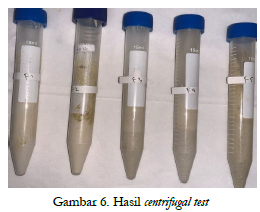Main Article Content
Abstract
The Utilization and processing of shellfish resources must be done to balance the high production of shellfish in Indonesia. In shellfish there is meat that can be processed into food and there are also by-products in the form of shells that are considered waste so that they are wasted and rarely used. Shell waste is a natural material that aims to reduce the negative impact of chemicals contained in toothpaste. There fore, this study aims to determine the effectiveness and determine the best treatment of toothpaste with the addition of green mussel shells and calcium carbonate with the addition of betel leaf extract. The stages of the study include making green mussel shell flour, making betel leaf extract, making toothpaste formulations with differences in mussel shell flour F1 (0%), F2 (16.5%), F3 (25%), F4 (33.5%), F5 (50%). The physical test parameters include organoleptic, centrifugal test, viscosity, physical stability test, and antibacterial. The results of the organoleptic test based on the parameters of color, aroma, and texture, the panel prefers F1. In the viscosity test, all formulations are in accordance with their standards, then for the calcium test, the F5 treatment contains the highest calcium carbonate. In the formalin test, all formulations were negative or did not contain formalin. Based on the results of the centrifugal test, all formulations had no phase differences, and for physical stability and pH, all were stable and still within the normal limits of SNI 8861-2020 on Toothpaste. For the antibacterial test, the best treatment was in F5 with an inhibition zone of 5.00 mm. These results indicate that the best toothpaste from green mussel shell waste and calcium carbonate is in F5.
Article Details

This work is licensed under a Creative Commons Attribution-NonCommercial-ShareAlike 4.0 International License.

